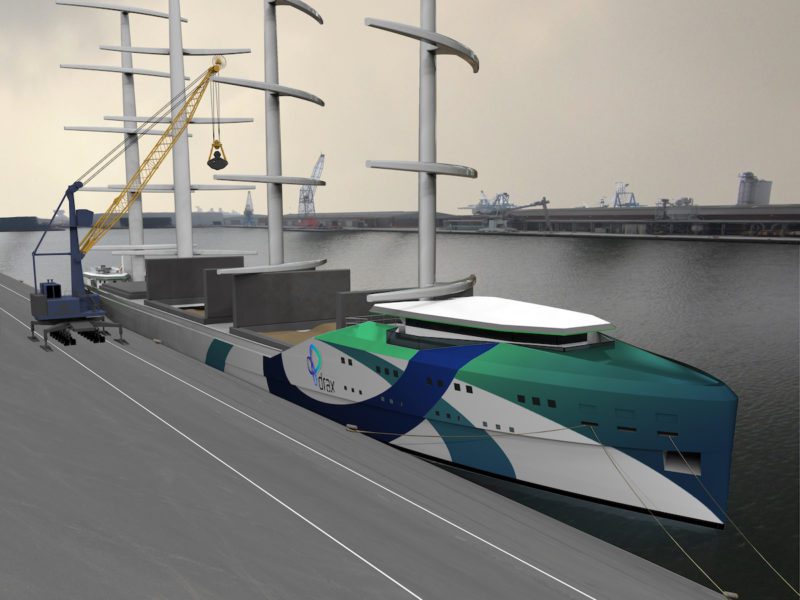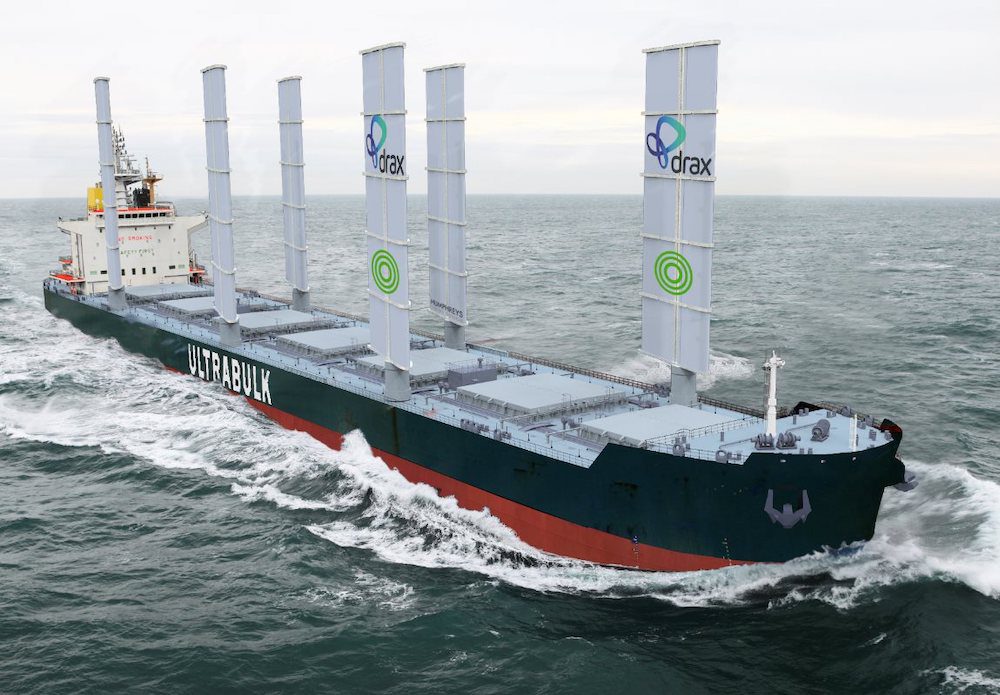“The combination of green shipping with renewables makes an even greater contribution to decarbonisation globally. This is a key development in achieving Drax’s aim – to deliver a zero carbon, low cost future for all,” said Drax Group CEO Will Gardiner.
Danish shipowner Ultrabulk has teamed up with a handful of companies in the UK the feasibility of fitting a modern bulk carrier with sail power in hopes of advancing technology that could help overall CO2 emissions in the shipping industry.
For the project, Ultrabulk is teaming with Drax, operator of the UK’s largest power station, along with the Smart Green Shipping Alliance (SSGA) and naval architects at Humphreys Yacht Design to launch a £100,000, 12-month feasibility study examining the potential of fitting an innovative sail technology known as Fastrig onto Ultrabulk ships that import biomass into the UK.
If successful, the group says the project could help cut both carbon emissions and costs in the shipping industry.
In recent years, Drax Power Station in North Yorkshire, England has transformed converted two thirds of the power station to the use biomass instead of coal, making it one of Europe’s biggest decarbonisation projects. Last year, the company imported 6.8 million tonnes of the compressed wood pellets in 221 deliveries to the ports of Immingham, Hull, Tyne and Liverpool, enabling it to generate 14% of the UK’s renewable electricity.
Using biomass instead of coal, Drax has delivered carbon savings of more than 80% compared to coal, including supply chain emissions. However, shipping still remains one of the most carbon-intensive parts of the biomass supply chain, according to Drax.
“This is a project that could really make a difference to the way the industry operates. Drax’s determination to cut carbon emissions creates real demand. Reducing emissions is good business, it saves costs and improves long-term operational certainty. This study aims to find the ‘sweet spot’ between reducing emissions and saving fuel costs,” said Diane Gilpin, CEO and Founder of Smart Green Shipping Alliance.

The first six months of the project will involve a technical feasibility study, establishing the mechanical parameters for retrofitting the Fastrig solution onto ships.
The next part of the project will focus on putting together a business case and calculating detailed costings for the project. Depending on the outcome of the feasibility study, the aim is to retrofit a ship with the Fastrig technology as soon as 2021.
The technology could drive down not only carbon emissions but also cost.
Diane Gilpin explained: “Fuel prices are vulnerable to oil market volatility, but once the technology is developed, wind is free at the point of use. The first onshore wind turbines were single devices producing 45KW; now we’re seeing fleets of 10MW producing energy, without subsidy. We can expect to mirror that speed of transition in the shipping industry.”

 Join The Club
Join The Club












